Answered step by step
Verified Expert Solution
Question
1 Approved Answer
please answer every single picture. this is all one question. i need every picture answered in this! Required information Use the following information for the
please answer every single picture. this is all one question. i need every picture answered in this! 


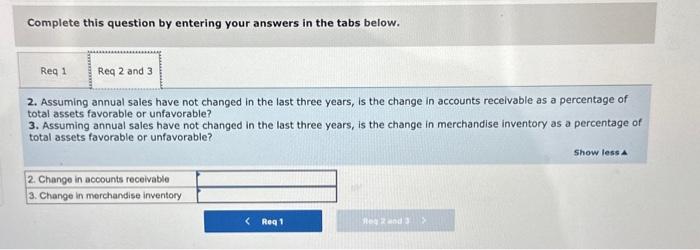
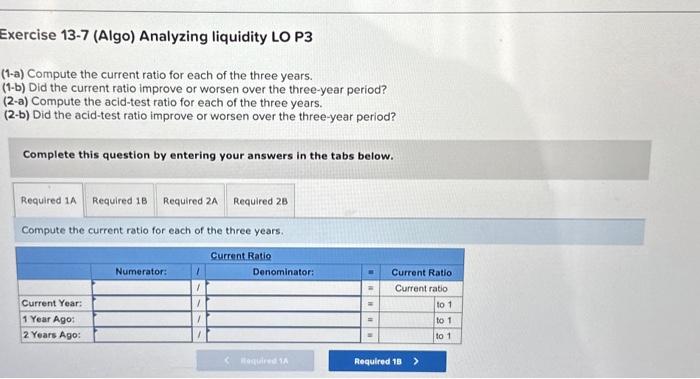





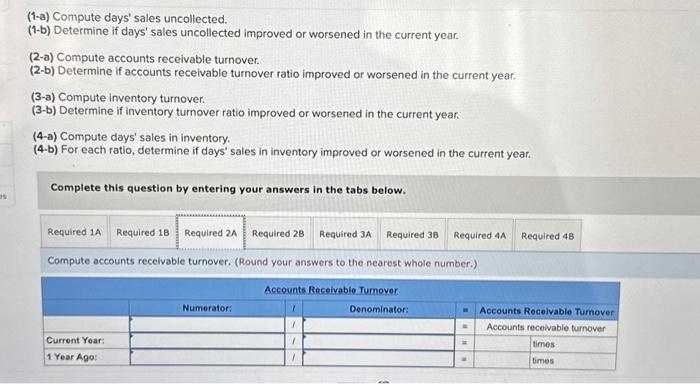
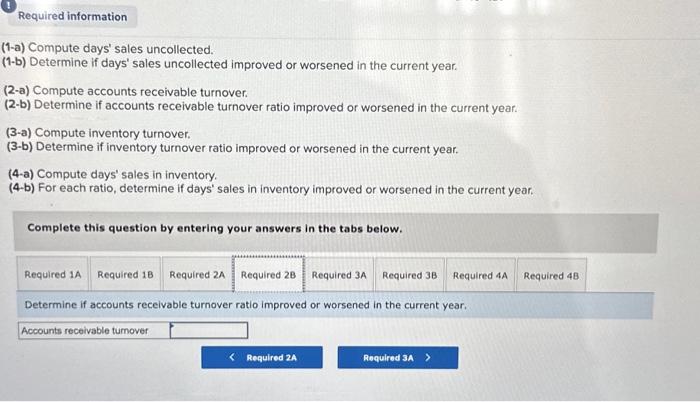
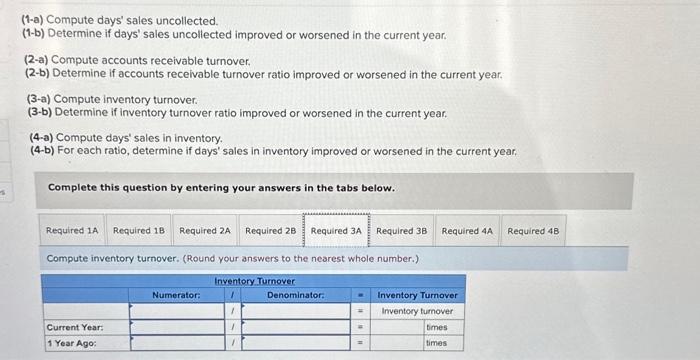

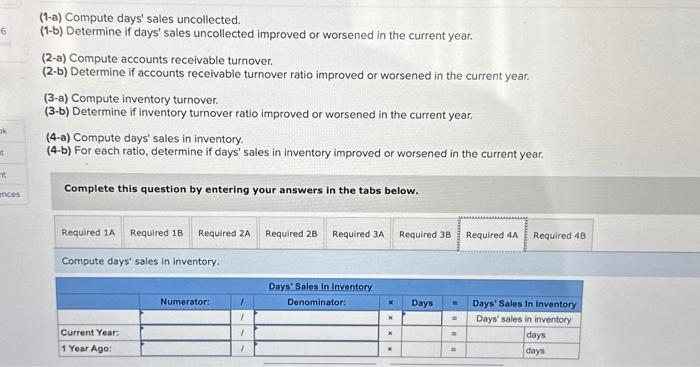
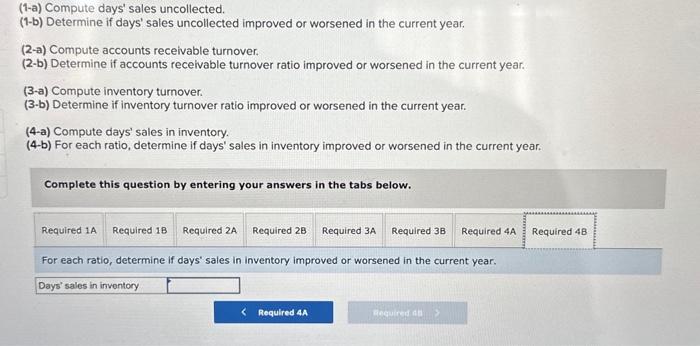
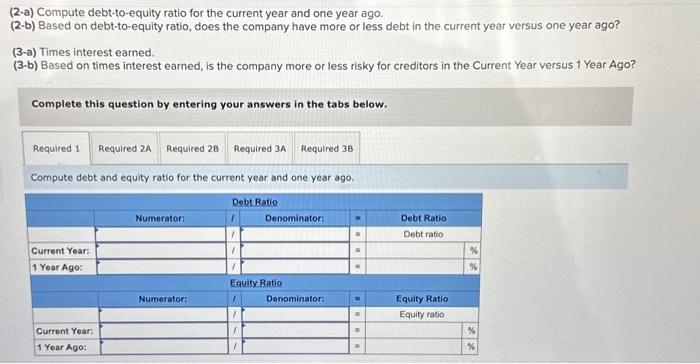

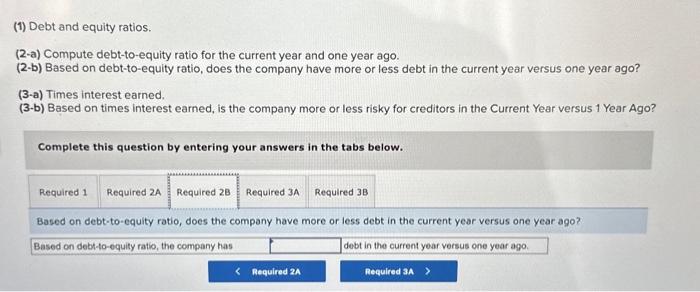
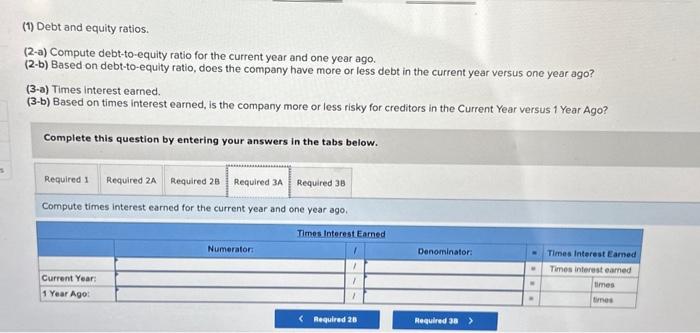
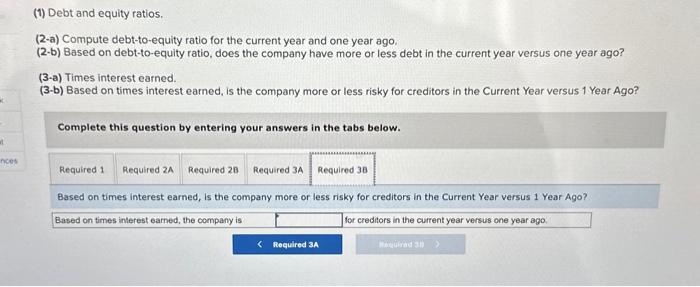
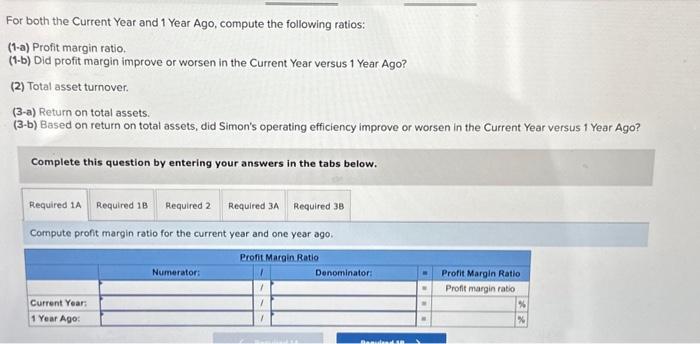
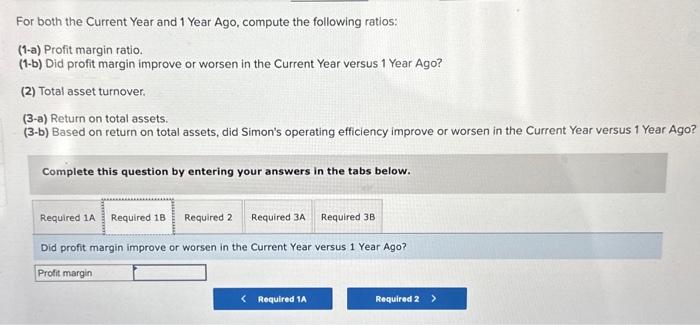

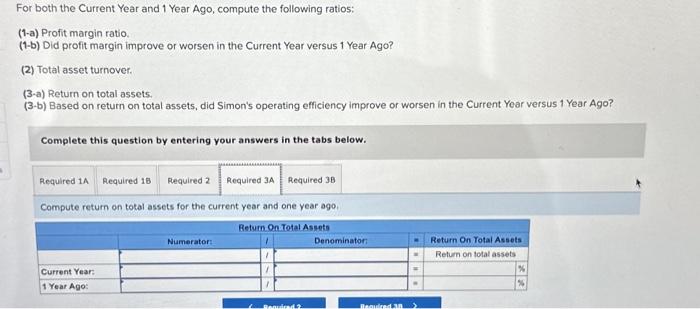
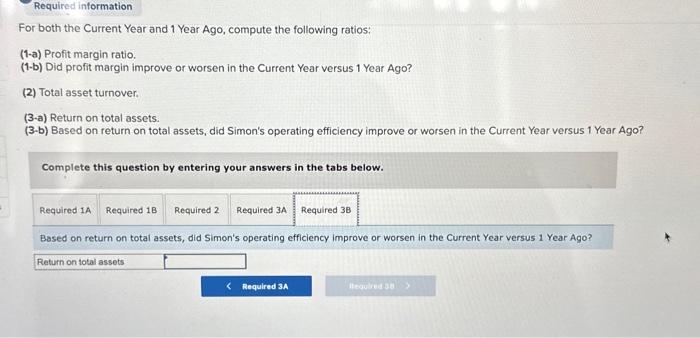
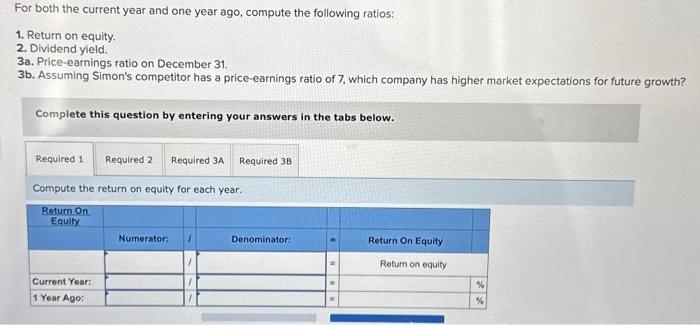
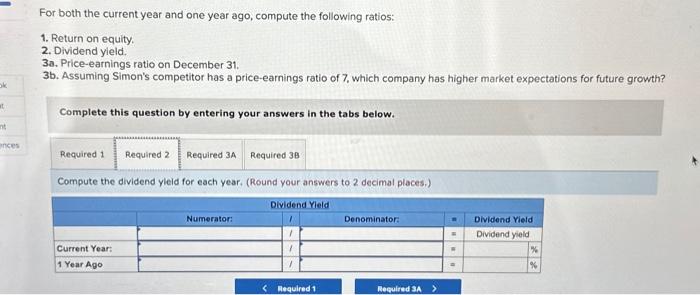
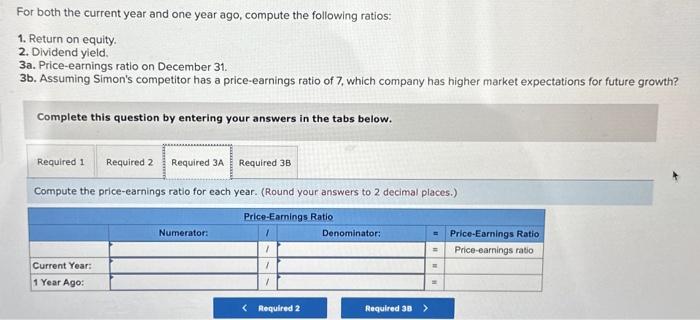
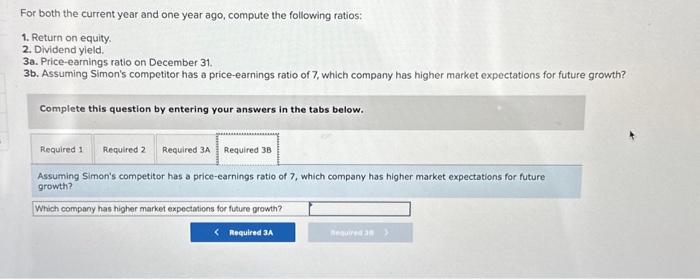
Required information Use the following information for the Exercises below. (Algo) [The following information applies to the questions displayed below.] Simon Company's year-end balance sheets follow. For both the current year and one year ago, compute the following ratios: Exercise 13-6 (Algo) Common-size percents LO P2 1. Express the balance sheets in common-size percents. 2. Assuming annual sales have not changed in the last three years, is the change in accounts recelvable as a percentage of total assets favorable or unfavorable? 3. Assuming annual sales have not changed in the last three years, is the change in merchandise inventory as a percentage of total assets favorable or unfavorable? Complete this question by entering your answers in the tabs below. Express the balance sheets in common-size percents. (Do not round intermediate calculations and round your final percentage answers to 1 decimal place.) Complete this question by entering your answers in the tabs below. 2. Assuming annual sales have not changed in the last three years, is the change in accounts recelvable as a percentage of total assets favorable or unfavorable? 3. Assuming annual sales have not changed in the last three years, is the change in merchandise inventory as a percentage of total assets favorable or unfavorable? Exercise 13-7 (Algo) Analyzing liquidity LO P3 (1-a) Compute the current ratio for each of the three years. (1-b) Did the current ratio improve or worsen over the three-year period? (2-a) Compute the acid-test ratio for each of the three years. (2-b) Did the acid-test ratio improve or worsen over the three-year period? Complete this question by entering your answers in the tabs below. Compute the current ratio for each of the three years. Exercise 13-7 (Algo) Analyzing liquidity LO P3 (1-a) Compute the current ratio for each of the three years. (1-b) Did the current ratio improve or worsen over the three-year period? (2-a) Compute the acid-test ratio for each of the three years. (2-b) Did the acid-test ratio improve or worsen over the three-year period? Complete this question by entering your answers in the tabs below. Did the current ratio improve or worsen over the three-year period? Exercise 13-7 (Algo) Analyzing liquidity LO P3 (1-a) Comibute the current ratio for each of the three years. (1-b) Did the current ratio improve or worsen over the three-year period? (2-a) Compute the acid-test ratio for each of the three years. (2-b) Did the acid-test ratio improve or worsen over the three-year period? Complete this question by entering your answers in the tabs below. Compute the acid-test ratio for each of the three years. Exercise 13-7 (Algo) Analyzing liquidity LO P3 (1-a) Compute the current ratio for each of the three years. (1-b) Did the current ratio improve or worsen over the three-year period? (2-a) Compute the acid-test ratio for each of the three years. (2-b) Did the acid-test ratio improve or worsen over the three-year period? Complete this question by entering your answers in the tabs below. Did the acid-test ratio improve or worsen over the three-year period? 1-a) Compute days' sales uncollected. 1-b) Determine if days' sales uncollected improved or worsened in the current year. (2-a) Compute accounts receivable turnover. (2-b) Determine if accounts receivable turnover ratio improved or worsened in the current year. (3-a) Compute inventory turnover. (3-b) Determine if inventory turnover ratio improved or worsened in the current year. (4-a) Compute days' sales in inventory. (4-b) For each ratio, determine if days' sales in inventory improved or worsened in the current year. Complete this question by entering your answers in the tabs below. Compute days' sales uncollected. (1-a) Compute days' sales uncollected. (1-b) Determine if days' sales uncollected improved or worsened in the current year. (2-a) Compute accounts receivable turnover. (2-b) Determine if accounts receivable turnover ratio improved or worsened in the current year. (3-a) Compute inventory turnover. (3-b) Determine if inventory turnover ratio improved or worsened in the current year. (4-a) Compute days' sales in inventory. (4-b) For each ratio, determine if days' sales in inventory improved or worsened in the current year. Complete this question by entering your answers in the tabs below. Determine if days' sales uncollected improved or worsened in the current year. (1-a) Compute days' sales uncollected. (1-b) Determine if days' sales uncollected improved or worsened in the current year. (2-a) Compute accounts receivable turnover. (2-b) Determine if accounts receivable turnover ratio improved or worsened in the current year. (3-a) Compute inventory turnover. (3-b) Determine if inventory turnover ratio improved or worsened in the current year. (4-a) Compute days' sales in inventory. (4-b) For each ratio, determine if days' sales in inventory improved or worsened in the current year. Complete this question by entering your answers in the tabs below. Compute accounts recelvable turnover. (Round your answers to the nearest whole number.) 1-a) Compute days' sales uncollected. 1-b) Determine if days' sales uncollected improved or worsened in the current year. (2-a) Compute accounts receivable turnover. (2-b) Determine if accounts receivable turnover ratio improved or worsened in the current year. (3-a) Compute inventory turnover. (3-b) Determine if inventory turnover ratio improved or worsened in the current year. (4-a) Compute days' sales in inventory. (4-b) For each ratio, determine if days' sales in inventory improved or worsened in the current year. Complete this question by entering your answers in the tabs below. Determine if accounts receivable turnover ratio improved or worsened in the current year. (1-a) Compute days' sales uncollected. (1-b) Determine if days' sales uncollected improved or worsened in the current year. (2-a) Compute accounts receivable turnover. (2-b) Determine if accounts receivable turnover ratio improved or worsened in the current year. (3-a) Compute inventory turnover. (3-b) Determine if inventory turnover ratio improved or worsened in the current year. (4-a) Compute days' sales in inventory. (4-b) For each ratio, determine if days' sales in inventory improved or worsened in the current year. Complete this question by entering your answers in the tabs below. Compute inventory turnover. (Round your answers to the nearest whole number.) (1-a) Compute days' sales uncollected. (1-b) Determine if days' sales uncollected improved or worsened in the current year. (2-a) Compute accounts receivable turnover. (2-b) Determine if accounts recelvable turnover ratio improved or worsened in the current year. (3-a) Compute inventory turnover. (3-b) Determine if inventory turnover ratio improved or worsened in the current year. (4-a) Compute days' sales in inventory. (4-b) For each ratio, determine if days' sales in inventory improved or worsened in the current year. Complete this question by entering your answers in the tabs below. Determine if inventory turnover ratio improved or worsened in the current year. (1-a) Compute days' sales uncollected. (1-b) Determine if days' sales uncollected improved or worsened in the current year. (2-a) Compute accounts receivable turnover. (2-b) Determine if accounts receivable turnover ratio improved or worsened in the current year. (3-a) Compute inventory turnover. (3-b) Determine if inventory turnover ratio improved or worsened in the current year. (4a) Compute days' sales in inventory. (4-b) For each ratio, determine if days' sales in inventory improved or worsened in the current year. Complete this question by entering your answers in the tabs below. Compute days' sales in inventory. (1-a) Compute days' sales uncollected. (1-b) Determine if days' sales uncollected improved or worsened in the current year. (2-a) Compute accounts receivable turnover. (2-b) Determine if accounts recelvable turnover ratio improved or worsened in the current year. (3-a) Compute inventory turnover. (3-b) Determine if inventory turnover ratio improved or worsened in the current year. (4-a) Compute days' sales in inventory. (4-b) For each ratio, determine if days' sales in inventory improved or worsened in the current year. Complete this question by entering your answers in the tabs below. For each ratio, determine If days' sales in inventory improved or worsened in the current year. 2-a) Compute debt-to-equity ratio for the current year and one year ago. 2-b) Based on debt-to-equity ratio, does the company have more or less debt in the current year versus one year ago? (3-a) Times interest earned. (3-b) Based on times interest earned, is the company more or less risky for creditors in the Current Year versus 1 Year Ago? Complete this question by entering your answers in the tabs below. Compute debt and equity ratio for the current year and one year ago. (1) Debt and equity ratios. (2-a) Compute debt-to-equity ratio for the current year and one year ago. (2-b) Based on debt-to-equity ratio, does the company have more or less debt in the current year versus one year ago? (3-a) Times interest earned. (3-b) Based on times interest earned, is the company more or less risky for creditors in the Current Year versus 1 Year Ago? Complete this question by entering your answers in the tabs below. Compute debt-to-equity ratio for the current year and one year ago. (1) Debt and equity ratios. (2-a) Compute debt-to-equity ratio for the current year and one year ago. (2-b) Based on debt-to-equity ratio, does the company have more or less debt in the current year versus one year ago? (3-a) Times interest earned. (3-b) Based on times interest earned, is the company more or less risky for creditors in the Current Year versus 1 Year Ago? Complete this question by entering your answers in the tabs below. Based on debt-to-equity ratio, does the company have more or less debt in the current year versus one year ago? 1) Debt and equity ratios. (2-a) Compute debt-to-equity ratio for the current year and one year ago. (2-b) Based on debt-to-equity ratio, does the company have more or less debt in the current year versus one year ago? (3-a) Times interest earned. (3-b) Based on times interest earned, is the company more or less risky for creditors in the Current Year versus 1 Year Ago? Complete this question by entering your answers in the tabs below. Compute times interest earned for the current year and one year ago. (1) Debt and equity ratios. (2-a) Compute debt-to-equity ratio for the current year and one year ago. (2-b) Based on debt-to-equity ratio, does the company have more or less debt in the current year versus one year ago? (3-a) Times interest earned. (3-b) Based on times interest earned, is the company more or less risky for creditors in the Current Year versus 1 Year Ago? Complete this question by entering your answers in the tabs below. Based on times interest earned, is the company more or less risky for creditors in the Current Year versus 1 Year Ago? For both the Current Year and 1 Year Ago, compute the following ratios: (1-a) Profit margin ratio. (1-b) Did profit margin improve or worsen in the Current Year versus 1 Year Ago? (2) Total asset turnover. (3-a) Return on total assets. (3-b) Based on return on total assets, did Simon's operating efficiency improve or worsen in the Current Year versus 1 Year Ago? Complete this question by entering your answers in the tabs below. Compute profit margin ratio for the current year and one year ago. For both the Current Year and 1 Year Ago, compute the following ratios: (1-a) Profit margin ratio. (1-b) Did profit margin improve or worsen in the Current Year versus 1 Year Ago? (2) Total asset turnover. (3-a) Return on total assets. (3-b) Based on return on total assets, did Simon's operating efficiency improve or worsen in the Current Year versus 1 Year Ago Complete this question by entering your answers in the tabs below. Did profit margin improve or worsen in the Current Year versus 1 Year Ago? For both the Current Year and 1 Year Ago, compute the following ratios: (1-a) Profit margin ratio. (1-b) Did profit margin improve or worsen in the Current Year versus 1 Year Ago? (2) Total asset turnover. (3-a) Return on total assets. (3-b) Based on return on total assets, did Simon's operating efficiency improve or worsen in the Current Year versus 1 Year Ago? Complete this question by entering your answers in the tabs below. Compute total asset turnover for the current year and one year ago. For both the Current Year and 1 Year Ago, compute the following ratios: (1-a) Profit margin ratio. (1-b) Did profit margin improve or worsen in the Current Year versus 1 Year Ago? (2) Total asset turnover. (3-a) Return on total assets. (3-b) Based on retum on total assets, did Simon's operating efficiency improve or worsen in the Current Year versus 1 Year Ago? Complete this question by entering your answers in the tabs below. Compute return on total assets for the current year and one year ago. For both the Current Year and 1 Year Ago, compute the following ratios: (1-a) Profit margin ratio. (1-b) Did profit margin improve or worsen in the Current Year versus 1 Year Ago? (2) Total asset turnover. (3-a) Return on total assets. (3-b) Based on return on total assets, did Simon's operating efficiency improve or worsen in the Current Year versus 1 Year Ago? Complete this question by entering your answers in the tabs below. Based on return on total assets, did Simon's operating efficiency improve or worsen in the Current Year versus 1 Year Ago? For both the current year and one year ago, compute the following ratios: 1. Return on equity. 2. Dividend yield. 3a. Price-earnings ratio on December 31 . 3b. Assuming Simon's competitor has a price-earnings ratio of 7. which company has higher market expectations for future growth? Complete this question by entering your answers in the tabs below. Compute the return on equity for each year. For both the current year and one year ago, compute the following ratios: 1. Return on equity. 2. Dividend yield. 3a. Price-earnings ratio on December 31 . 3b. Assuming Simon's competitor has a price-earnings ratio of 7 , which company has higher market expectations for future growth? Complete this question by entering your answers in the tabs below. Compute the dividend yleld for each year. (Round your answers to 2 decimal places.) For both the current year and one year ago, compute the following ratios: 1. Return on equity. 2. Dividend yield. 3a. Price-earnings ratio on December 31 . 3b. Assuming Simon's competitor has a price-earnings ratio of 7 , which company has higher market expectations for future growth? Complete this question by entering your answers in the tabs below. Compute the price-earnings ratio for each year. (Round your answers to 2 decimal places.) For both the current year and one year ago, compute the following ratios: 1. Return on equity. 2. Dividend yield. 3a. Price-earnings ratio on December 31 . 3b. Assuming Simon's competitor has a price-earnings ratio of 7 , which company has higher market expectations for future growth? Complete this question by entering your answers in the tabs below. Assuming Simon's competitor has a price-earnings ratio of 7, which company has higher market expectations for future growth? Which company has higher market expoctations for future growth 





























Step by Step Solution
There are 3 Steps involved in it
Step: 1

Get Instant Access to Expert-Tailored Solutions
See step-by-step solutions with expert insights and AI powered tools for academic success
Step: 2

Step: 3

Ace Your Homework with AI
Get the answers you need in no time with our AI-driven, step-by-step assistance
Get Started


